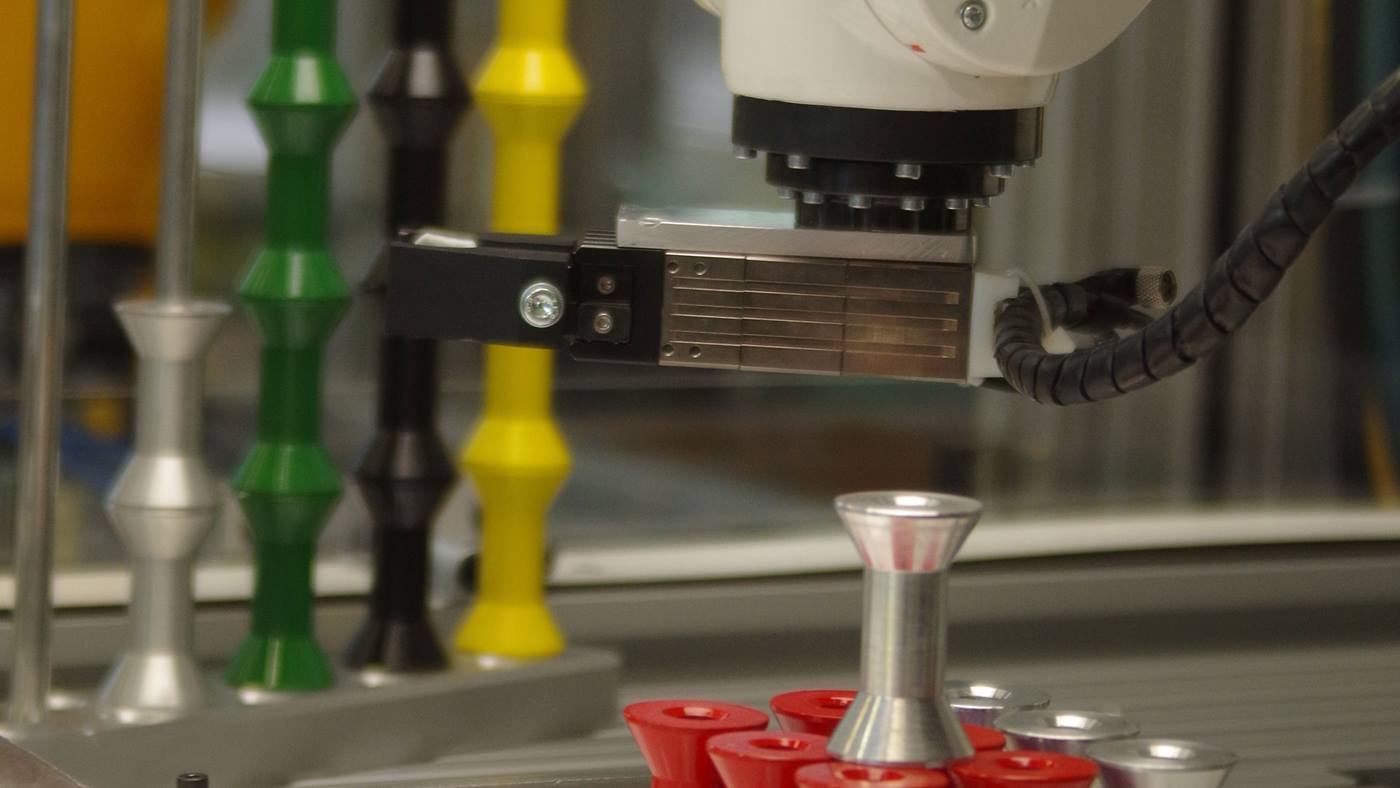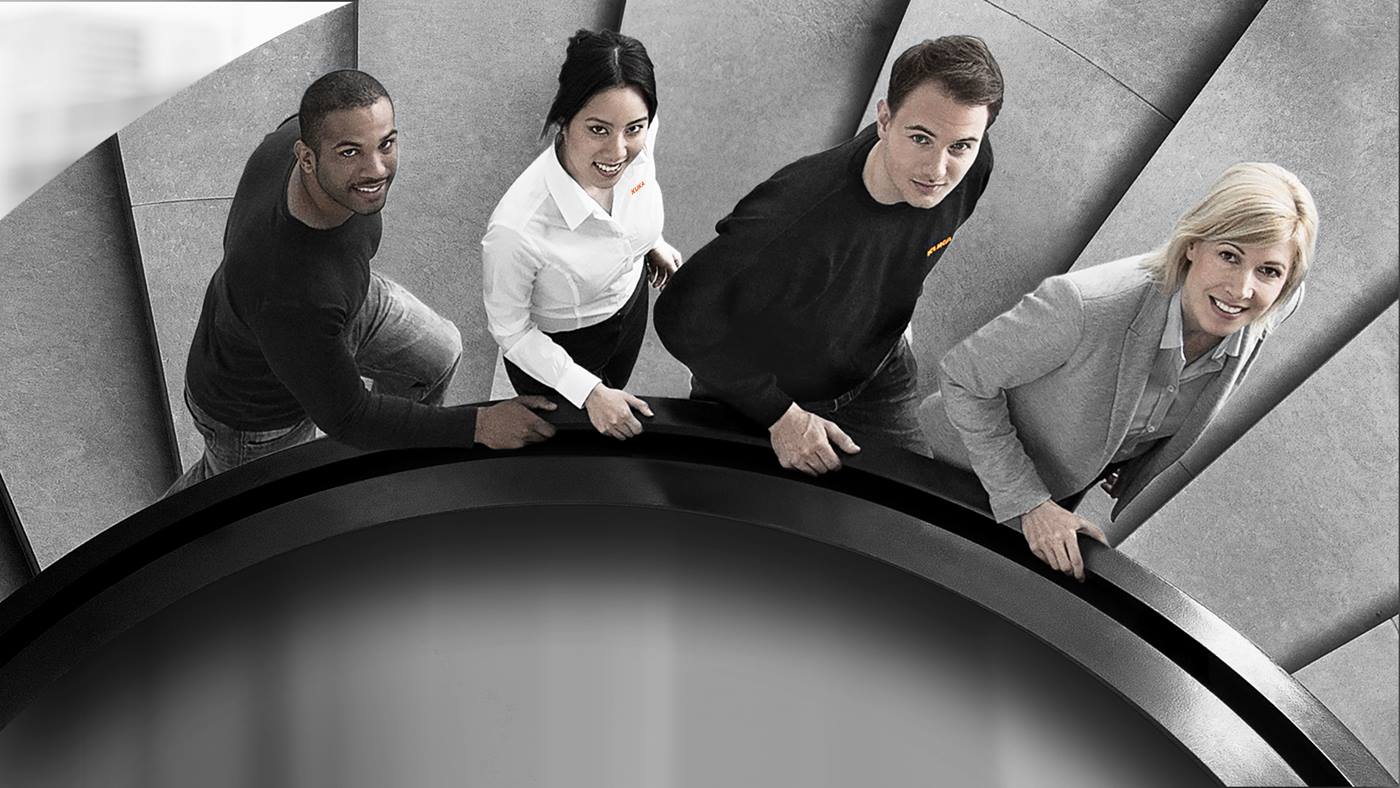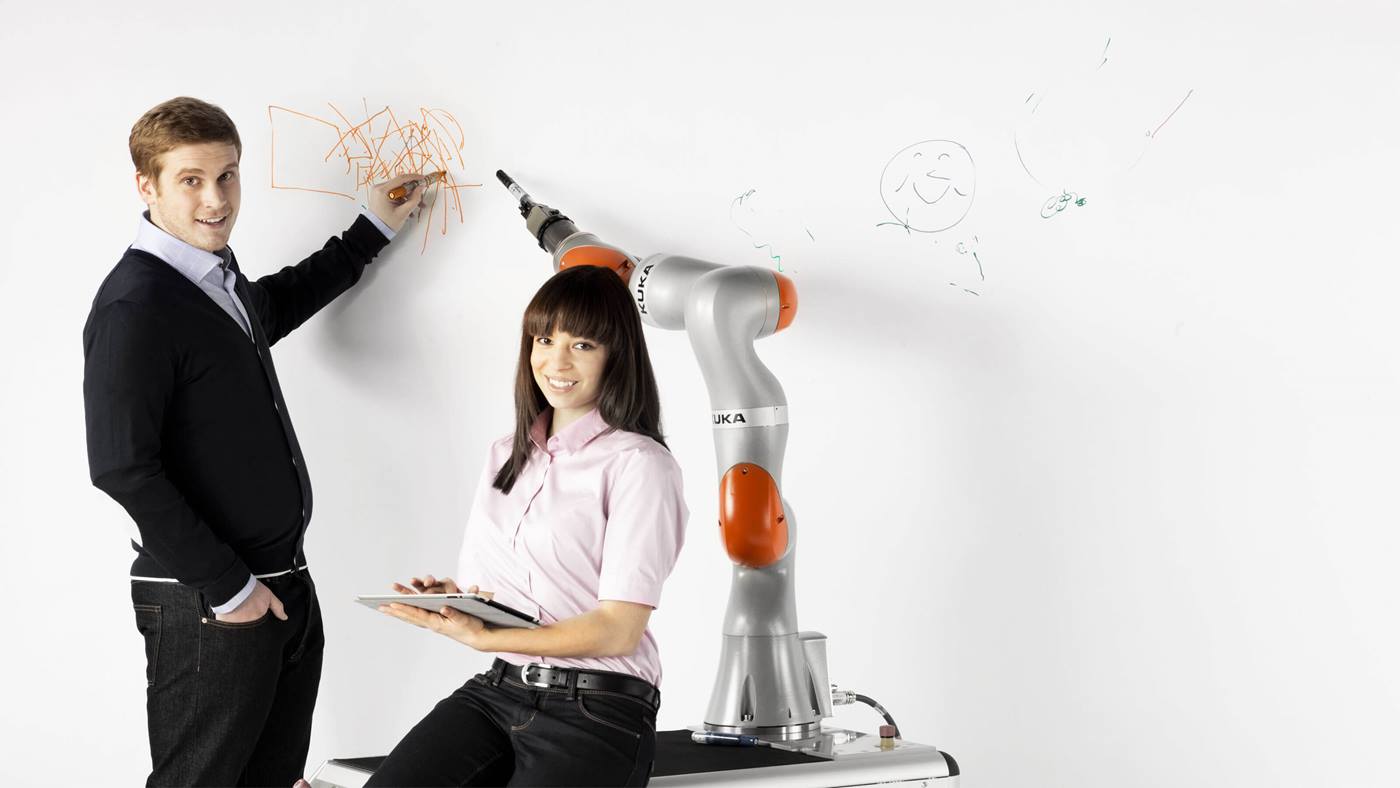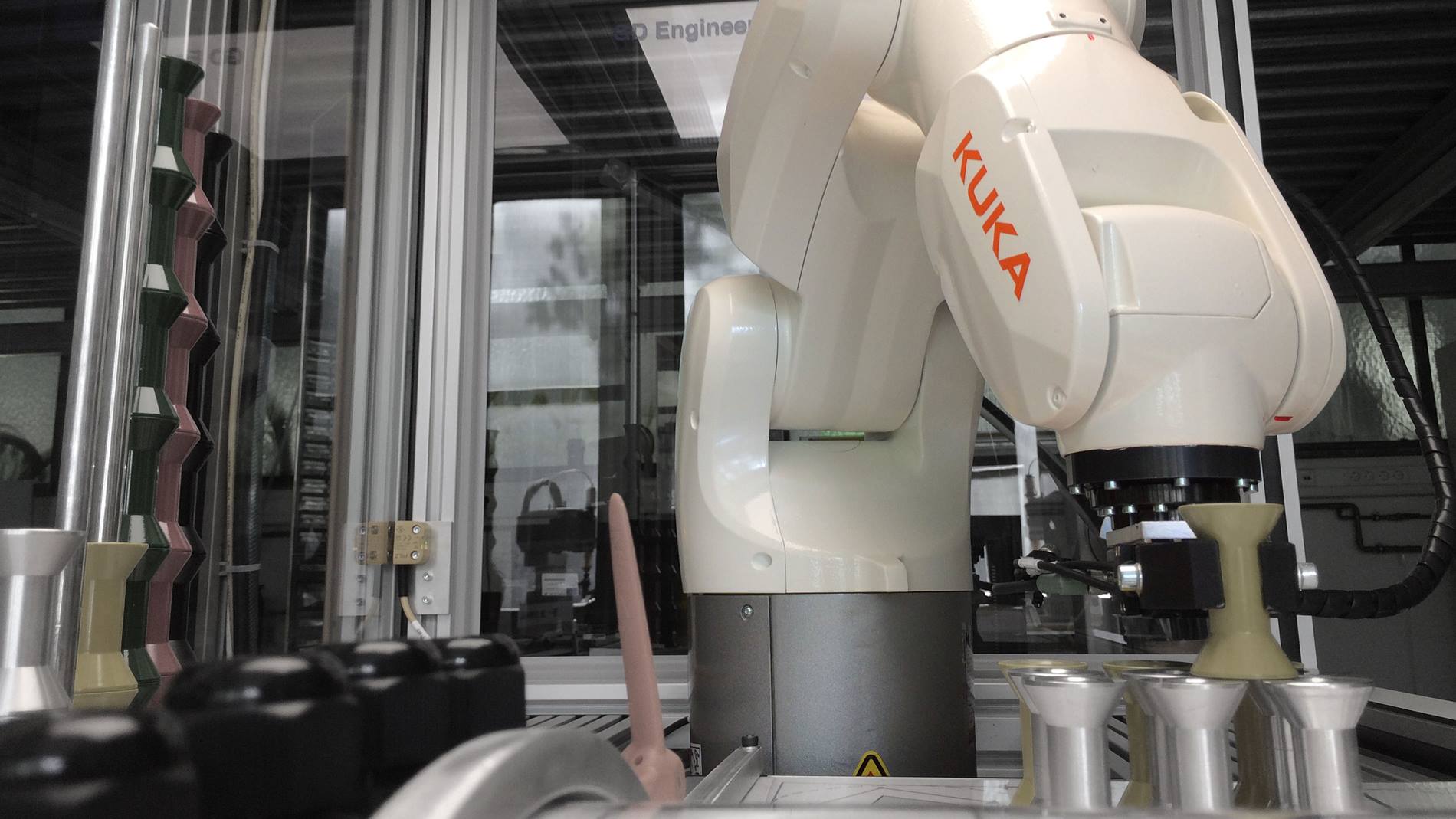
Students learn to program robots
Ulm University of Applied Sciences offers the elective subject of Robotics. In this course, students learn to program KUKA robots and carry out exciting experiments in the process. The elective subject always arouses great interest.
6 December 2017
Prof. Dr. Klaus Schlickenrieder and his colleague Prof. Dr.-Ing. Manfred Wehrheim of the Production Engineering and Production Economics faculty take turns overseeing the elective subject of Robotics at Ulm University of Applied Sciences. One topic taught in the course is how to program a robot to grip a pen and use it to draw. Due to the growing demand from students, the course offerings are expanding as well. The new programs KUKA.OfficeLite and KUKA.SimPro 3.0 enable several students to work with the robots at a time.
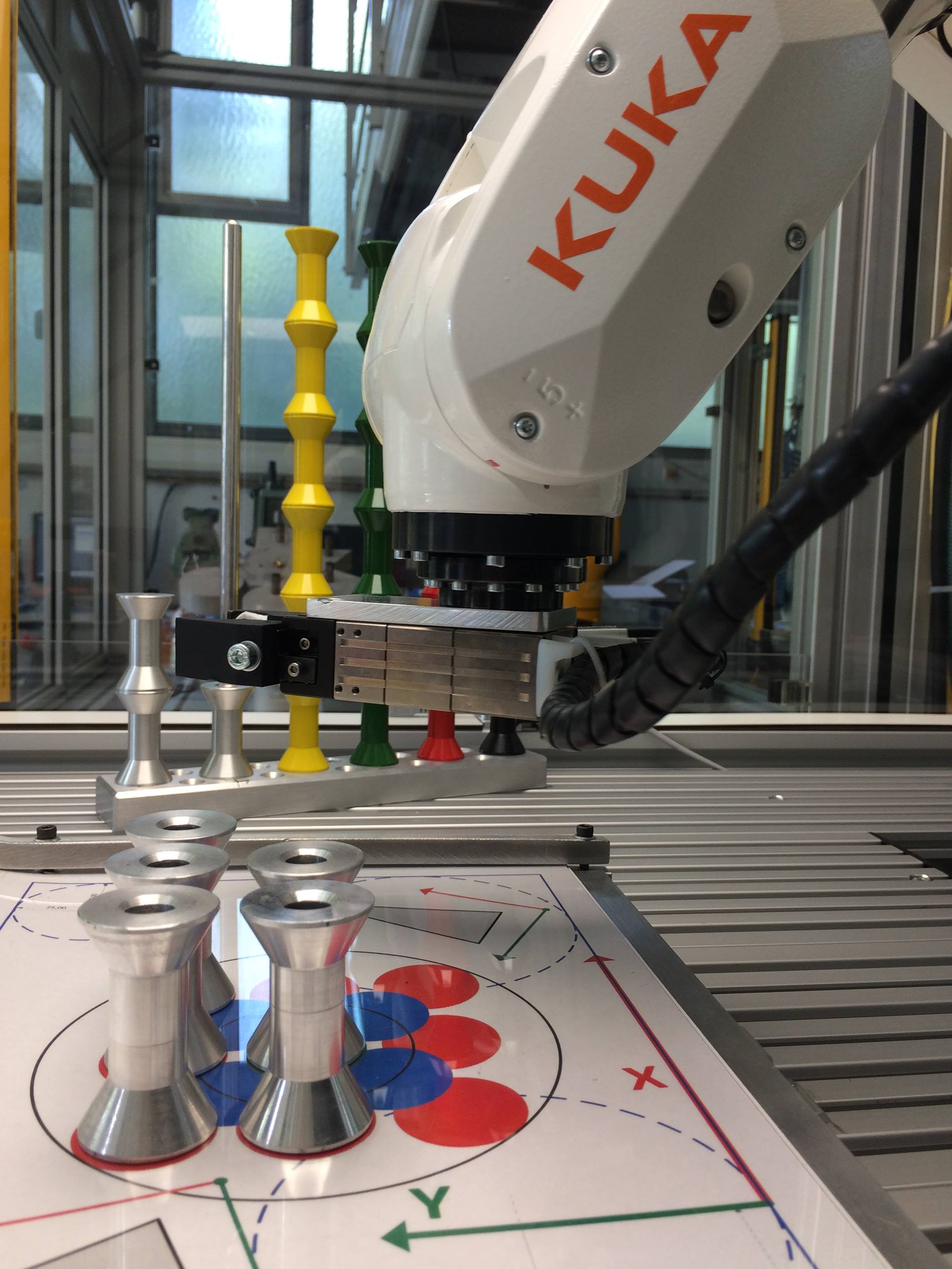
Students first learn the theory, then the practice of robotics
The course is offered every semester and is divided into theoretical and practical sections. “In the lectures, we first teach students the technical know-how they need. The students then apply their knowledge to the robot within their project teams,” explains Schlickenrieder. The robotics course is equipped with a robot cell featuring a KUKA KR 3 AGILUS robot as well as a KR 30 – not nearly enough, as the number of interested students exceeds the number of course openings.
We want to familiarize students from all disciplines with the topic of robotics. The diverse potential applications for robots help us to bring this exciting topic to life.
Expanded course offerings thanks to KUKA software
Schlickenrieder and Wehrheim are endeavoring to increase the number of available openings in the course. Currently, the programs KUKA.OfficeLite and KUKA Sim 3.0 are being installed. With the virtual robot controller KUKA.OfficeLite, programs can be created offline on a computer. This makes it possible to teach and monitor several students at one time. “We plan to make the program available to students by the next winter semester,” promises Schlickenrieder.
University of Applied Sciences expands robot cell
In one project, a group of students have programmed a KR 3 AGILUS to independently grip a pen. Depending on the program, the robot then draws various geometric shapes, such as squares or a meander, on a piece of paper. The robot is also able to pick up cylindrical components and stack these into a three-story pyramid. Building on this, another group is learning to further develop the application and is working to optimize the robot gripper. They are also testing whether the robot can be connected to the cloud.
